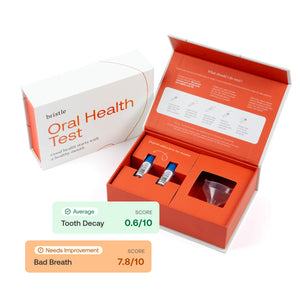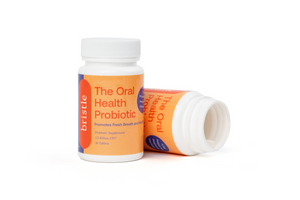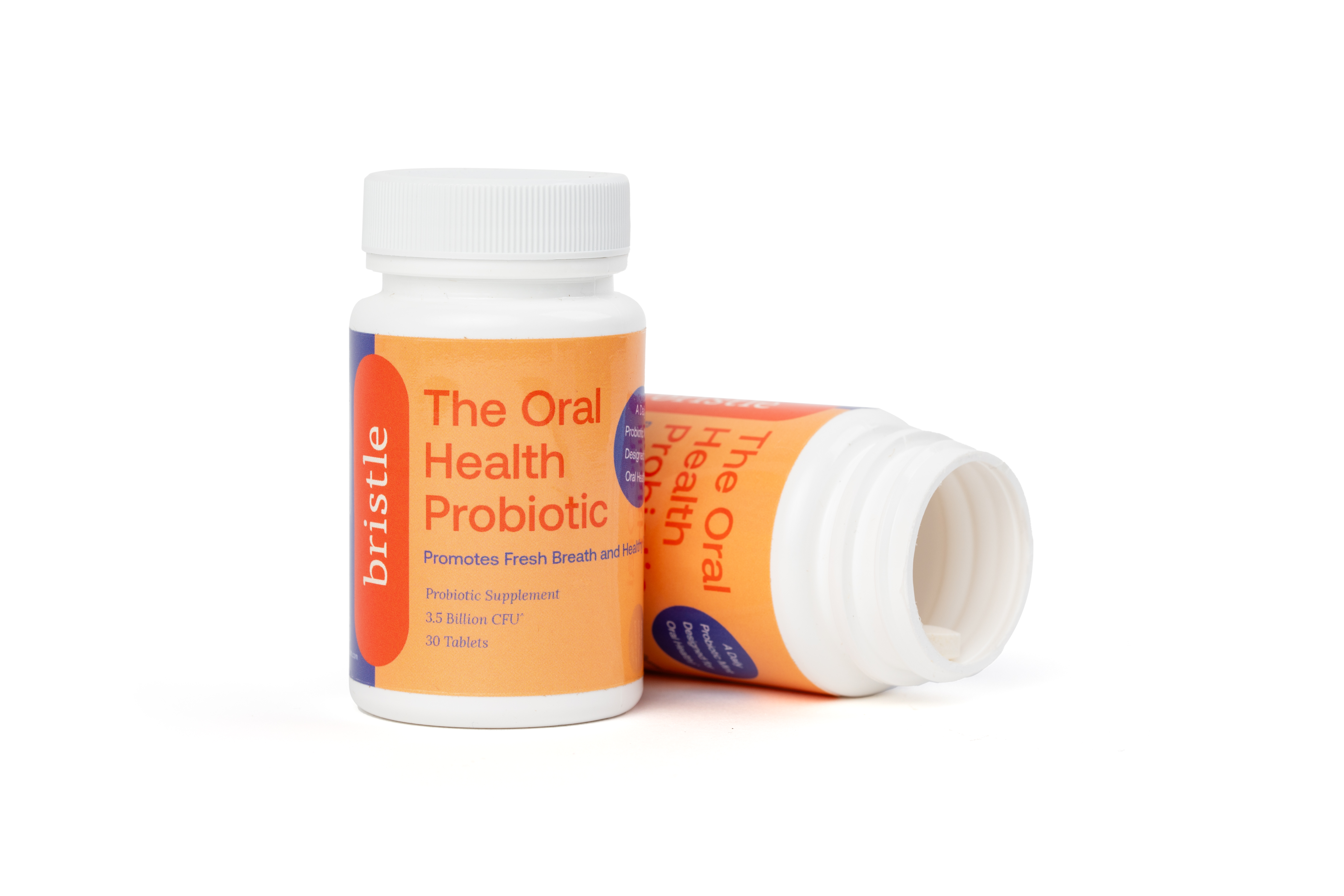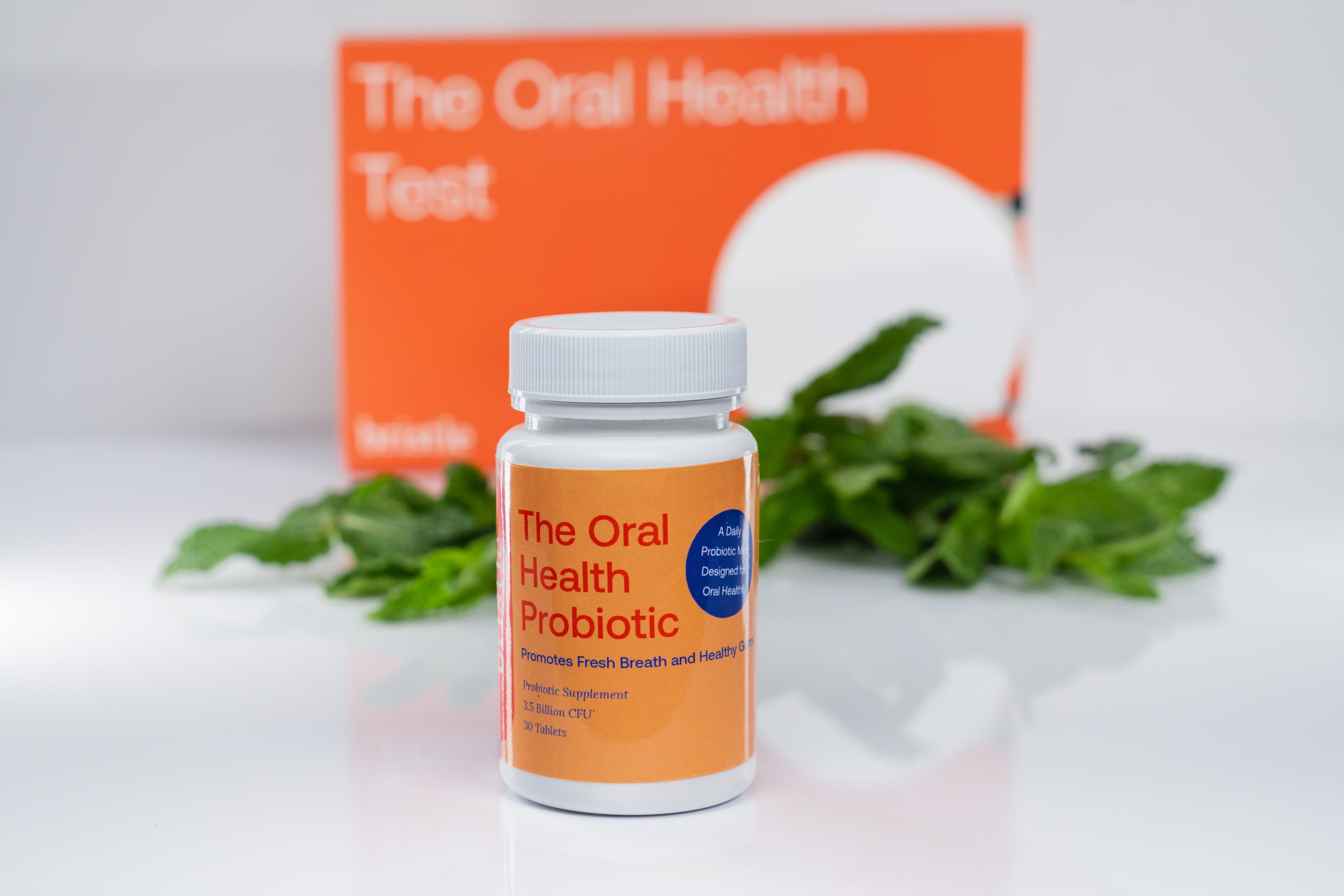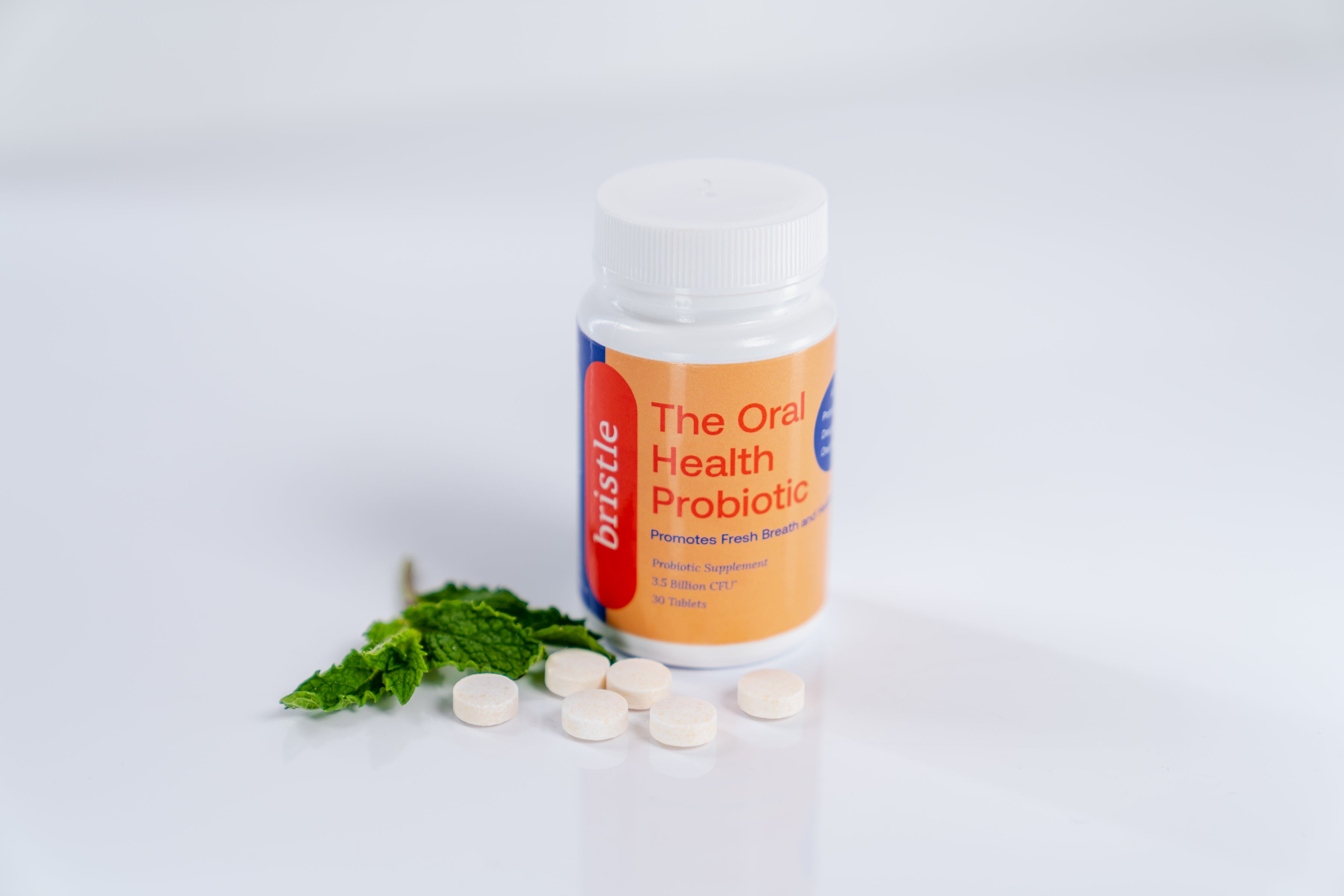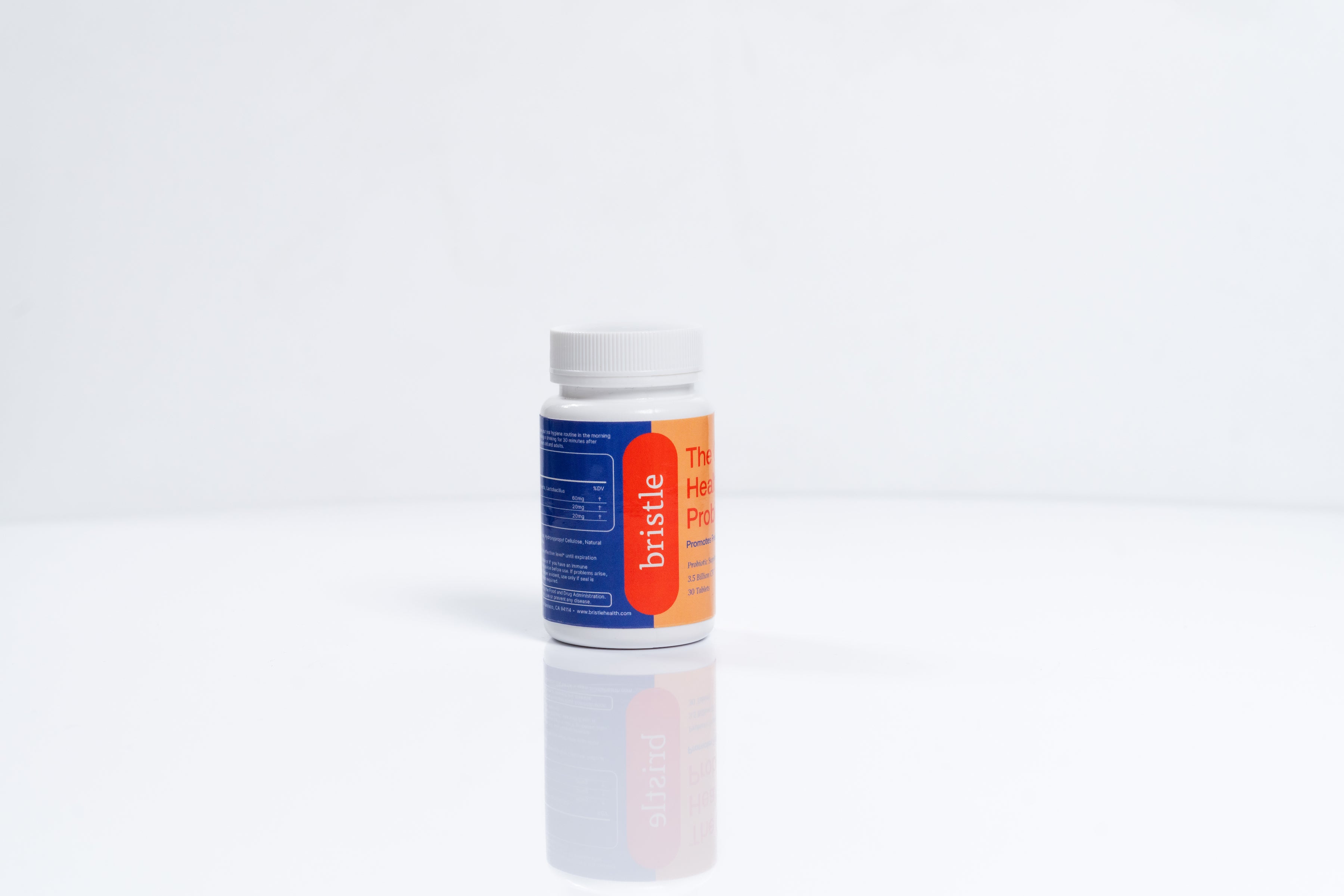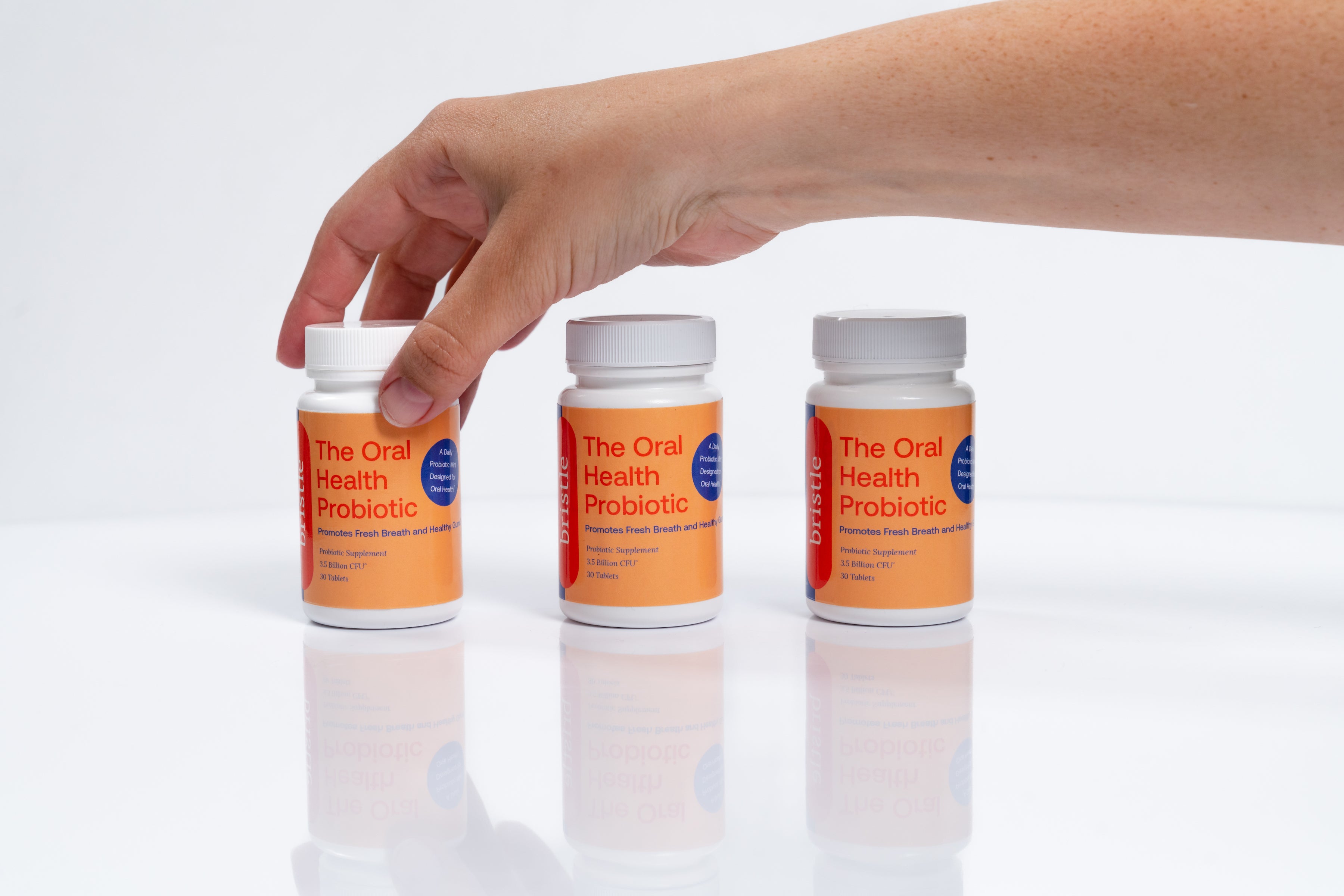In your mouth resides the second largest and most diverse community of microbes in your body, also known as the oral microbiome. The fungi, bacteria, and viruses in your mouth live symbiotically with you, helping to keep not only your teeth and gums healthy, but are also linked to overall health outcomes. Some of these species are known pathogens, causing cavities or inflammation, while others are beneficial commensal species that promote health.
At Bristle, we profile the oral microbiome comprehensively, checking for any bacterial, fungal, and viral species we can detect. We’ve identified a number of common species that occupy the largest fraction of the oral microbiome, which we call “dominant species”. Dominant species are the species that comprise the highest relative abundance in a community. Here is a very simple analogy: a berry pie might contain 50% blueberries, 30% raspberries, and 20% blackberries. In this pie, the dominant species is the blueberry.
In short, we’ve found that dominant species are important in shaping the rest of the microbiome, similar to how a dominant berry can influence the flavor and texture of a pie. While it’s true that the lower abundant species are also important to the community, these dominant species are important drivers that can influence the species of lower abundance.
In this review, we cover the five most common dominant species in the oral microbiome and how they affect your health. Some of the data presented in this article are from Bristle internal research.
The 5 most common dominant bacteria in the oral microbiome
Streptococcus mitis, Prevotella, Actinomyces, Neisseria, and Rothia species make up 75% of all dominant species. In other words, 75% of all people have one of these species as the highest relative abundance in their oral microbiome.

Here is a summary of each of those dominant genuses and species, and what research has revealed about how they affect your health.
Streptococcus mitis
Streptococcus mitis is one of the most common commensal bacteria, and one of the earliest colonizers of the oral cavity. S. mitis is present in 99.7% of all oral microbiomes and is the most dominant species in 33% of the time. Streptococcus mitis is one of the earliest colonizers of the oral microbiome, present in the majority of microbiomes from infants to the elderly.
Streptococcus mitis is a commensal organism, colonizing both the hard surfaces and soft mucosal tissues. It is a non-motile facultative anaerobe, and can also be found in the nasopharynx and the throat. In extremely rare cases, Streptococcus mitis may also be an opportunistic pathogen, occasionally associated with cases of endocarditis, bacteremia, pneumonia, and meningitis, most commonly in immunocompromised individuals (1). The vast majority of the time, S. mitis is beneficial for a number of different potential reasons.
Research has shown that S. mitis can trigger the expression of B-defensin 2, an antimicrobial molecule that can kill oral pathogens (2). Interestingly, S. mitis can also help tune the immune response, where it has been shown to reduce the induction of pro-inflammatory molecule IL-8 when co-incubated with Fusobacterium nucleatum or Aggregatibacter actinomycetemcomitans, two periodontal pathogens that can cause inflammation (3). S. mitis can both boost immune defense and help prevent invasion by oral pathogens.
Bristle internal research on S. mitis dominated oral microbiomes
Interestingly, oral microbiomes with S. mitis as their dominant species are 36% less likely to contain Streptococcus. mutans, a cariogenic pathogens, than other oral microbiomes. Similarly, S. mitis dominant oral microbiomes are 60% less likely to contain Propionibacterium acidifaciens, another cariogenic species. We also find that people with S. mitis as a dominant species are less likely to have tooth decay than other people. Additionally, Porphyromonas gingivalis is 12% less likely to be present in oral microbiomes where S. mitis is the dominant species compared to other microbiomes.
Prevotella species
Prevotella species are the second most common bacteria to dominate the oral cavity. The most common species of the Prevotella genus is P. melaninogenica, which appears in 95% of all oral microbiomes. Prevotella species are the most dominant species 15.5% of the time. Prevotella is extremely common in the oral, vaginal, and gut microbiomes. Prevotella is a diverse genus that includes a wide array of species such as P. melaninogenica, P. intermedia, and P. nigrescens.
P. melaninogenica is a species well known for its ability to produce black pigment when grown in vitro. However, counterintuitively, P. melaninogenica is not associated with black teeth staining (4, 5). On the other hand, P. intermedia is a periodontal pathogen that may also affect overall health. P. intermedia has been found in synovial joints of patients with rheumatoid arthritis (6), and is more abundant in people with asthma (7), though the exact role of P. intermedia in progression of those diseases is still unclear.
Bristle internal research on Prevotella dominated oral microbiomes
Oral microbiomes with a Prevotella species as their dominant species are 36% less likely to contain S. mutans than microbiomes dominated by other species. Additionally, Prevotella dominated oral microbiomes have lower prevalences of halitosis-related Klebsiella and Enterobacter species. For example, Prevotella dominant samples are 55% less likely to have Enterobacter cloacae, a common species that can cause halitosis.
On the other hand, Prevotella dominated oral microbiomes are more likely to have halitosis-related Dialister species like D. micraerophilus (47% more likely) and D. invisus (21% more likely). Surprisingly, Prevotella dominated oral microbiomes are less likely to have Aggregatibacter_actinomycetemcomitans (61%) and Treponema_putidum (36%) although the mechanisms and health outcomes of these associations is still to be determined.
Actinomyces species
Actinomyces species are the third most common dominant bacteria, for 9.4% of all oral microbiomes. The most prevalent species in the Actinomyces genus is A. odontolyticus, which appears in 90% of oral microbiomes. Actinomyces are commonly found in the oral microbiome, and are a common cause of infection after dental procedures (8). In extremely rare cases, Actinomyces can cause Actinomycosis, a chronic disease that affects the neck and face.
Actinomyces are poorly understood species, as they are extremely difficult to culture in the lab. The majority of Actinomyces species are microaerophilic or anaerobic, and slow growing in vitro, making them challenging to characterize. While the abundance of Actinomyces in the oral microbiome is not significantly correlated with disease, multiple reports have demonstrated the opportunistic pathogenic capacity of Actinomyces species on overall health. For instance, Actinomyces species can cause endocarditis (9, 10), though these infections are exceedingly rare.
Actinomyces may also be beneficial in the oral microbiome, as they can reduce nitrate to nitrite, an important function of the oral microbiome that is correlated with improved cardiovascular and cognitive health (11, 12).
Bristle internal research on Actinomyces dominated oral microbiomes
Actinomyces dominated oral microbiomes are 60% more likely to have Propionibacterium_acidifaciens. Interestingly, oral microbiomes dominated by Actinomyces species are 22% more likely to have Porphyromonas gingivalis, an aggressive periodontal pathogen. Actinomyces dominated oral microbiomes are 84% less likely to have Klebsiella species.
Neisseria species
Neisseria species are the fourth most common dominant bacteria, and the most dominant species in 8.6% of all samples. The most common Neisseria species is N. mucosa, which is present in 88% of all oral microbiomes. N. subflava, N. flavescens, and N. mucosa are the most common commensal Neisseria in the oral microbiome. Similar to Actinomyces, Neisseria species are difficult to culture, making them difficult to characterize biochemically. However we do know that Neisseria species are aerobic, nitrite reducing species that can also produce ammonia when metabolizing amino acids such as arginine (13). Both of these functions are important in the oral microbiome for maintaining health of gums and teeth (14).
These Neisseria species have been shown to reduce nitrate to nitrite and nitrite to nitric oxide, promoting both oral and cardiovascular health (15, 16). Neisseria are more abundant in healthy individuals without any oral disease (17, 18). Interestingly, Neisseria species are also positively correlated with birth weight during pregnancy, where mothers with low levels of Neisseria were more likely to give birth to a baby with low birthweight (19). Additionally, Neisseria species are particularly sensitive to environmental and behavioral factors. In one study, Neisseria species were significantly lower in people who frequently drink alcohol or used tobacco products (20), which may also be a factor in their progression to oral disease.
While most Neisseria species are commensal organisms, some Neisseria species are also pathogens. For example, Neisseria gonorrhea and Neisseria meningitidis are known human pathogens, causing gonorrhea and meningitis. While these diseases are relatively uncommon, both are treatable with antibiotics.
Bristle internal research on Neisseria dominated oral microbiomes
Neisseria dominated oral microbiomes are 65% less likely to have S. mutans, potentially indicating that Neisseria species can help combat caries by S. mutans. However, alternatively, Neisseria dominated oral microbiomes are 18% more likely to have Porphyromonas gingivalis. Neisseria dominant samples are also 167% more likely to contain Treponema putidum, another species related to periodontal disease. Neisseria dominant samples are 64% less likely to contain Klebsiella oxytoca, a species that can cause halitosis.
Although Neisseria are a commensal species, Neisseria dominant samples are 32% less likely to contain Streptococcus gordonii, another species that helps protect teeth from cavities. The exact mechanisms by which Neisseria interacts with other species in the microbiome are still being investigated.
Rothia species
Rothia species are the fifth most common dominant bacteria. Rothia are the most abundant species in 8.1% of oral microbiomes and are a normal part of the oral microbiome. Rothia species are often isolated from dental plaque on a tooth surface (29). The most common Rothia species are R. mucilaginosa, R. aeria, and R. dentocariosa, which appear in 99%, 89%, and 97% of all oral microbiomes respectively.
Rothia are commensal species that may have benefits for oral health. Rothia mucilaginosa can produce enterobactin, a molecule that can reduce the growth of other pathogenic species such as S. mutans (21). Additionally, Rothia mucilaginosa may be anti-inflammatory, and can inhibit the expression of inflammatory genes, and potentially reduce the progression of inflammatory diseases such as periodontal disease (22). Rothia species are also well characterized nitrate reducers, helping to generate nitric oxide in the oral microbiome (23, 24).
While Rothia is an important commensal species in the oral microbiome, in rare cases, Rothia species may cause opportunistic infections such as infective endocarditis in immunocompromised individuals (25).
Bristle internal research on Rothia dominated oral microbiomes
Interestingly, microbiomes dominated by Rothia are 20% more likely to contain P. gingivalis, but are substantially less likely to have Klebsiella (100% less likely) or Enterobacter (95% less likely). Some studies have found that Rothia can co-aggregate with P. gingivalis, potentially explaining the correlation (26). However, the mechanisms and consequences of this co-aggregation are still unclear. Rothia dominant samples are also less likely to contain Aggregatibacter actinomycetemcomitans and Treponema putidum, two pathogenic periodontal species that can cause chronic inflammation (27, 28).
Conclusion
The interactions between different species in the oral microbiome are still unclear, but some of the data shared here demonstrate how the most abundant species in the microbiome can shape a community and drive health and disease. Similar to a pie, the fruits that are highest abundance in a pie can be extremely important at determining the flavor and texture of the pie. The oral microbiome varies greatly from person to person, but our data suggest that the dominant species are important at shaping the rest of the community, and the less abundant species in the microbiome. These lower abundant species are also extremely important at maintaining microbiome homeostasis.

